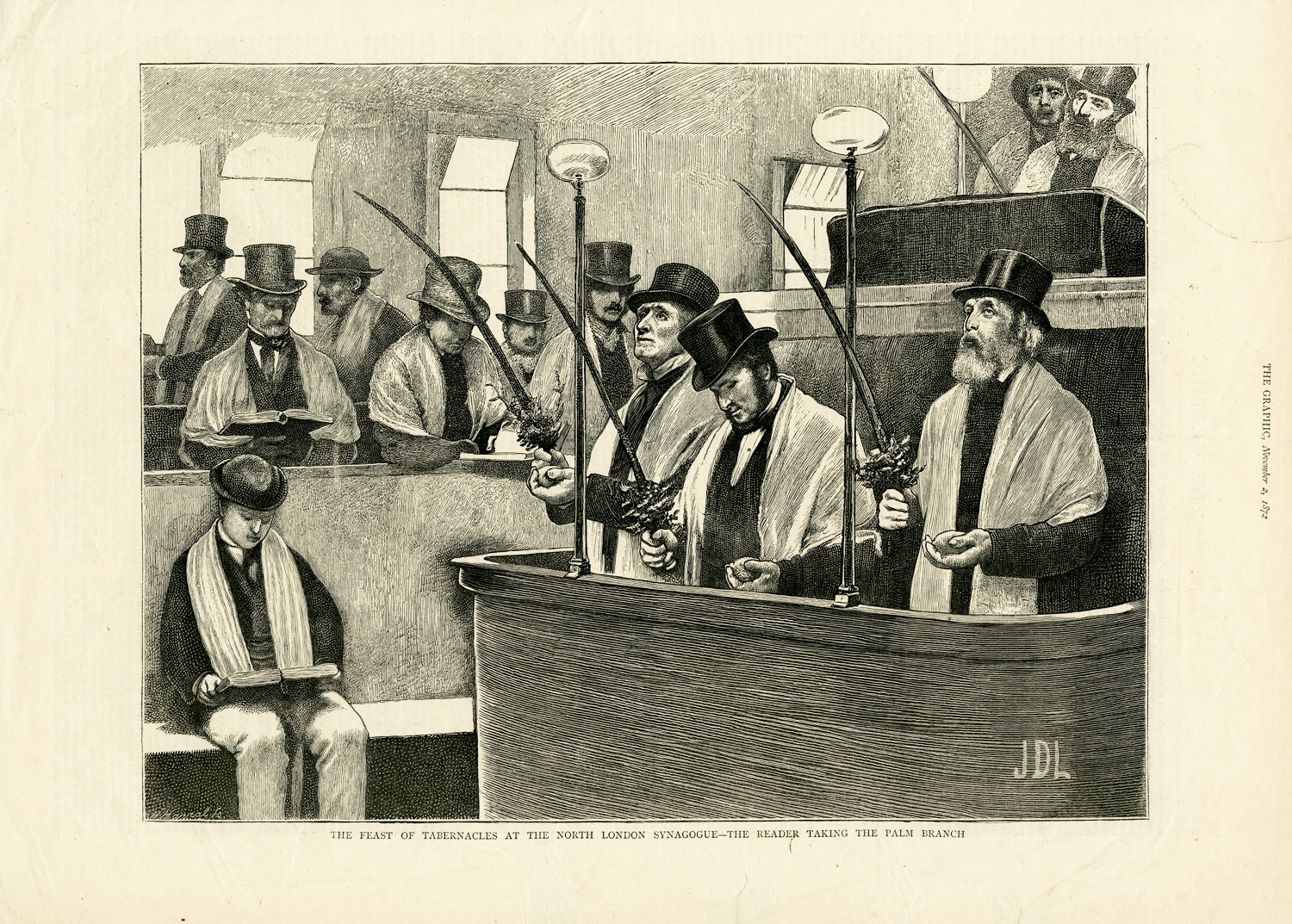This scene depicts a service at the North London Synagogue during the holiday of Sukkot (also called the Feast of Tabernacles), a seven-day festival commemorating the 40 years the children of Israel spent in the desert. The ritual highlighted here is one of the distinctive aspects of Sukkot: the introduction into the synagogue of the lulav (palm branch) and etrog (citron). The December, 14, 1872, edition of Harper’s Weekly claimed that of all ceremonies practiced by Jews, “none are more impressive or interesting” than those of Sukkot. The text goes on to detail the ceremony of waving what is known as the four species: lulav, myrtle, willow, and citron. Collectively the “four species” are referred to as the lulav, whose role in celebrating Sukkot stems from the commandment of the Torah to “take the product of the goodly trees, branches of palm trees, boughs of leafy trees, and willows of the brook, and you shall rejoice before the Lord your God seven days (Leviticus 23:40).”
The author makes clear the connection between the objects pictured here and the biblical text being read, noting that the branches and citron have “emblematic significations…which are explained in the passages chanted by the reader.” Explicitly tying the use of the lulav with these passages adds depth to the scene, portraying a ritual deeply rooted in the Torah. The enactment of a commandment and the commemoration of 40 years of wandering give the holiday of Sukkot a serious undercurrent, reminding worshipers of their history and commitment to God’s commandments.
